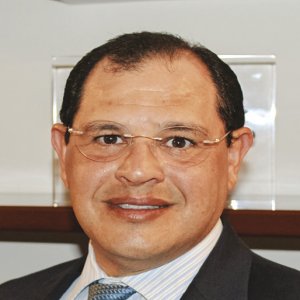New Approaches Drive Change

STORY INLINE POST
Whether innovating a process or a product, the implementation of new ideas and approaches is a consistent driver of significant change. Until now, Mexico has lagged in the race to innovate but technology accessibility and affordability are helping the country to catch up and could move it closer to its goal of becoming a hub for innovation, says Salvador Blasco, Vice President of Business Development and Director General for Qualcomm Mexico.
“Innovation is not only the invention of new products. You can improve an object or a process and that is innovation as well. Not having access to technology is no longer a valid argument for lack of innovation,” Blasco says.
Blasco is convinced that Mexico is breaking through the cultural barrier of inaction that has stunted creativity. It just needs to take the next step. “We need to create momentum to allow the emergence of people who are not afraid of creating new products to solve existing problems,” he says.
Knowledge transfer will play a key role in moving the country to this next level, Blasco says. Today’s innovators do not have to start from scratch; there is a wealth of experience in Mexico that the younger generation can tap, no matter their background. “Young people can stand on the shoulders of those who came before them and create something.” Blasco believes that opening the technology door to people with different profiles will have a lasting and transformational impact because “diversity provides you with different perspectives and approaches to solve a problem.”
In the telecoms sector, Mexican carriers can look to foreign companies to garner insights on best practices that can be implemented at home. IoT is one area where Mexican companies can get ahead of a nascent technology by emulating their international counterparts. “Carriers in other parts of the world are doing their part to develop IoT products. These companies are investing in their own R&D departments or are working alongside entrepreneurs to develop new products. They might not have the know-how but they are working on developing it or helping someone else to do it.”
Mexican telecoms businesses know they must diversify into fresh areas or risk becoming obsolete. IoT offers them an opportunity if they can change the lenses through which they are experiencing the world, Blasco says. “Mexican carriers have already realized that if they continue offering just voice and data services, they will face a future similar to that experienced by fixed-line telephone companies.” For Blasco, Mexican carriers have an invaluable opportunity to become the fabric that provides the connectivity required for the digitalization of a number of industries.
Government also has a role to play by crafting and implementing appropriate public policies, for innovation and for the adaptation of new technologies. “The technology has already been developed and it is both accessible and costeffective. It is a matter of political will rather than an economic issue.” Blasco cites two requirements. “For carriers to invest in technology such as 4G, the government must work on two things: free up radio spectrum for the signal to travel and implement a tax scheme that excludes connectivity.”
Qualcomm itself thrives on innovation. The company is investing in designing of the future through the 5G network. Before this happens, Blasco says that 4G still has a long way to go but its full development requires the participation of both carriers and public policymakers. “Knowledge and intellectual property are what generate value in the fourth industrial revolution,” says Blasco. “We need to incentivize this and not hold it back.”
A new generation of thinkers will ultimately underpin any efforts in innovation and online learning will help develop these new innovators. Qualcomm is helping to ensure they have access to materials in their language, overcoming one key online hurdle for Spanish speakers: much of the content is in English. “There are not enough online courses in Spanish for people to self-motivate and begin building something.” Qualcomm is making the content of its Qualcomm Developer Network available in Spanish and Portuguese, allowing potential innovators to find tools and resources to integrate their technologies into apps and devices related to IoT, among others.
























